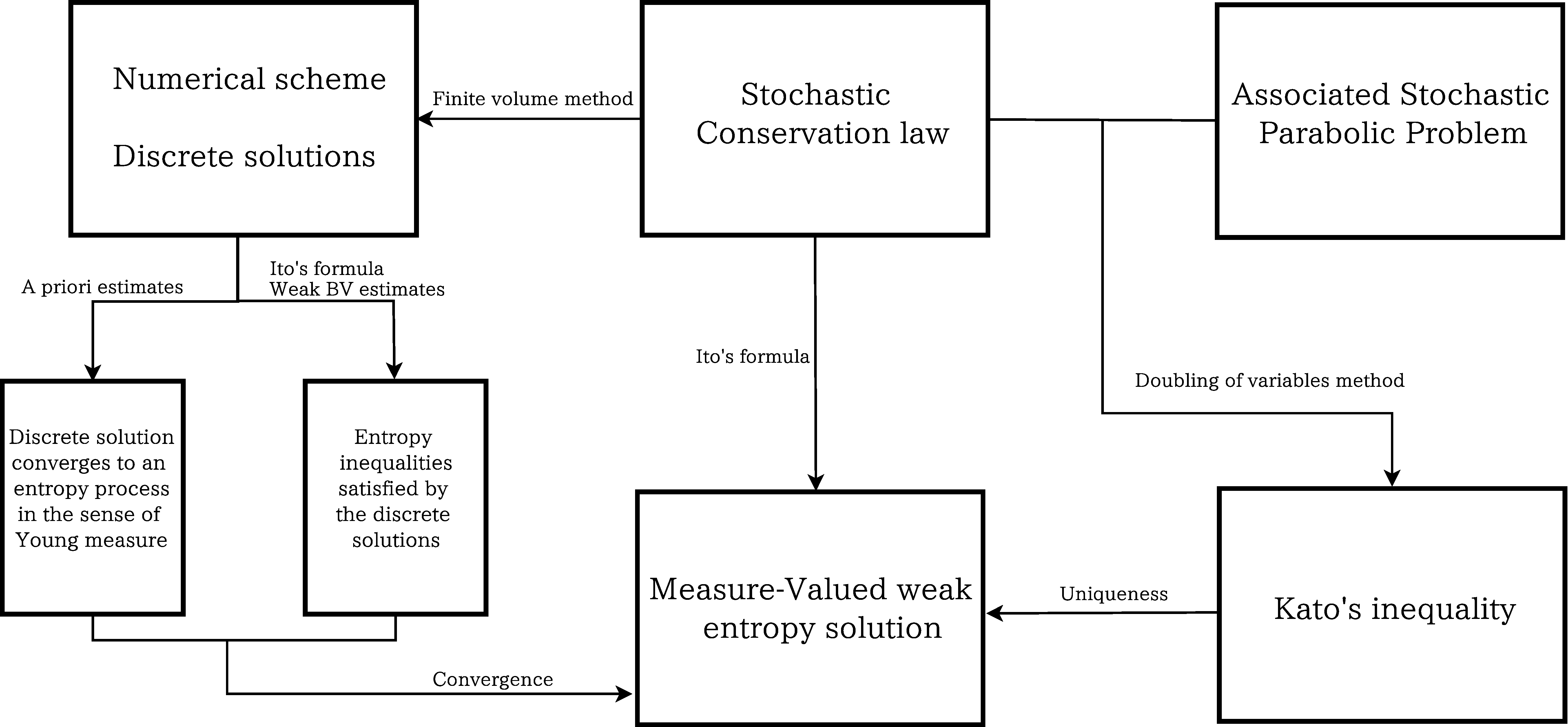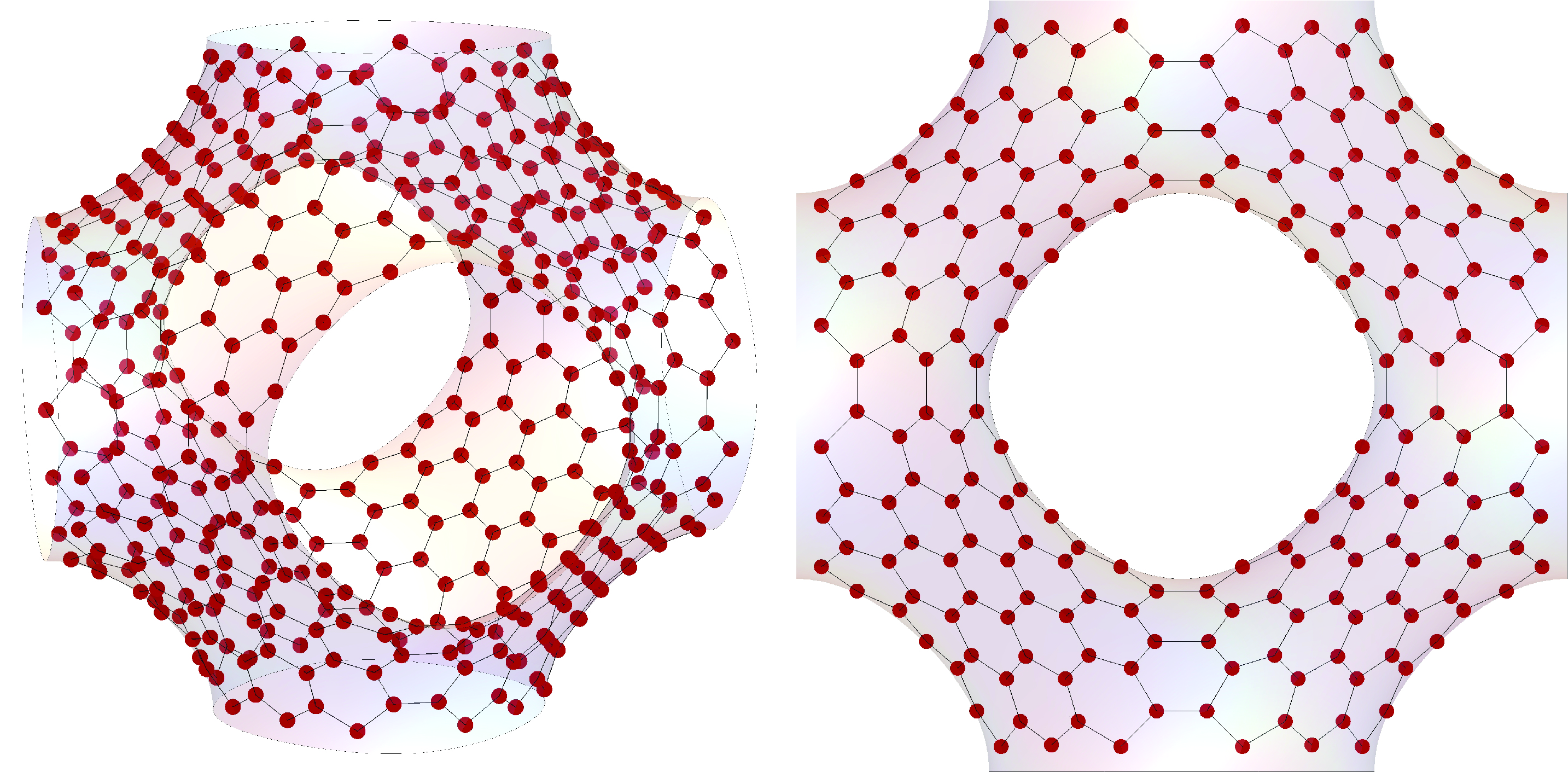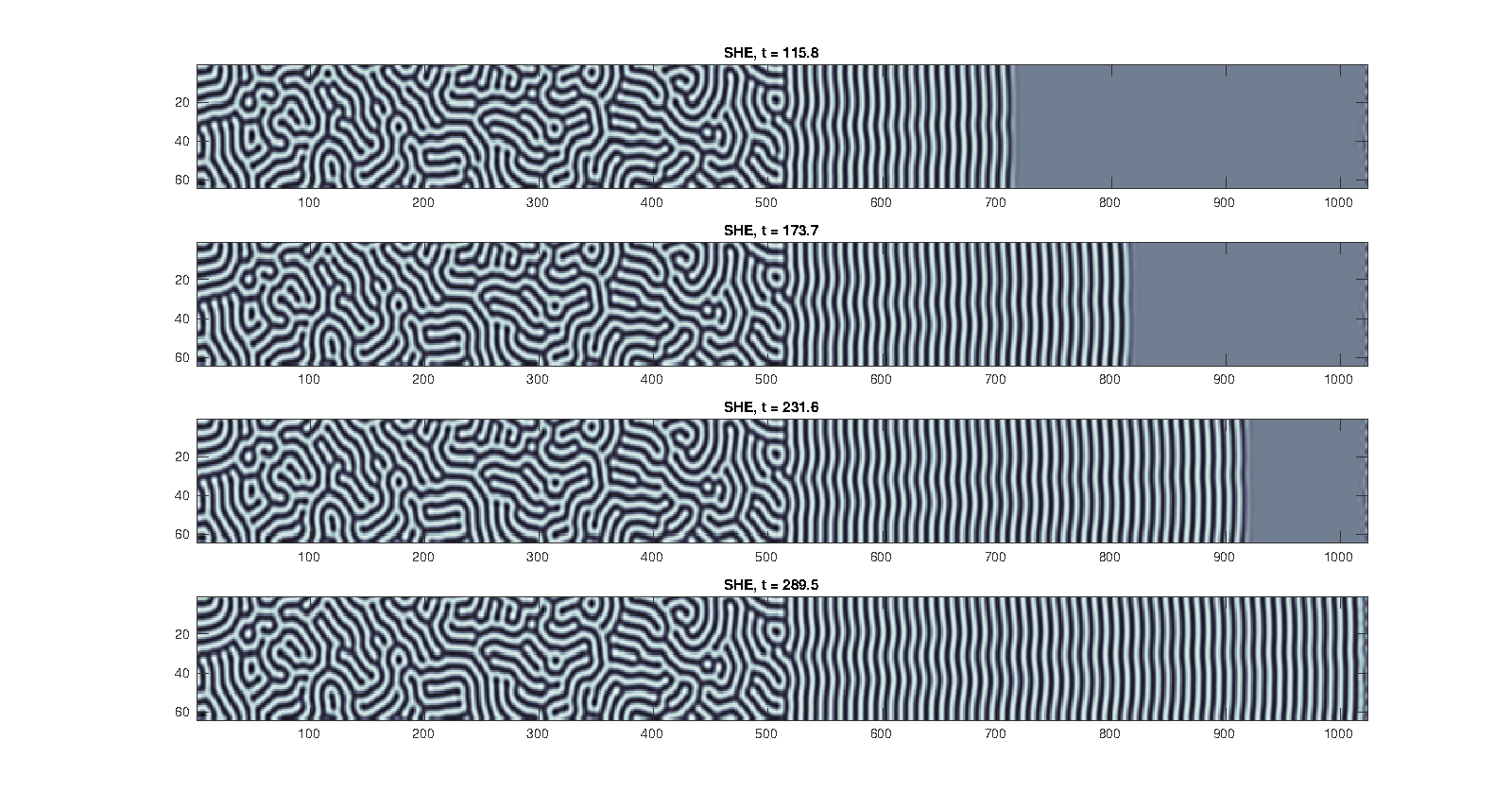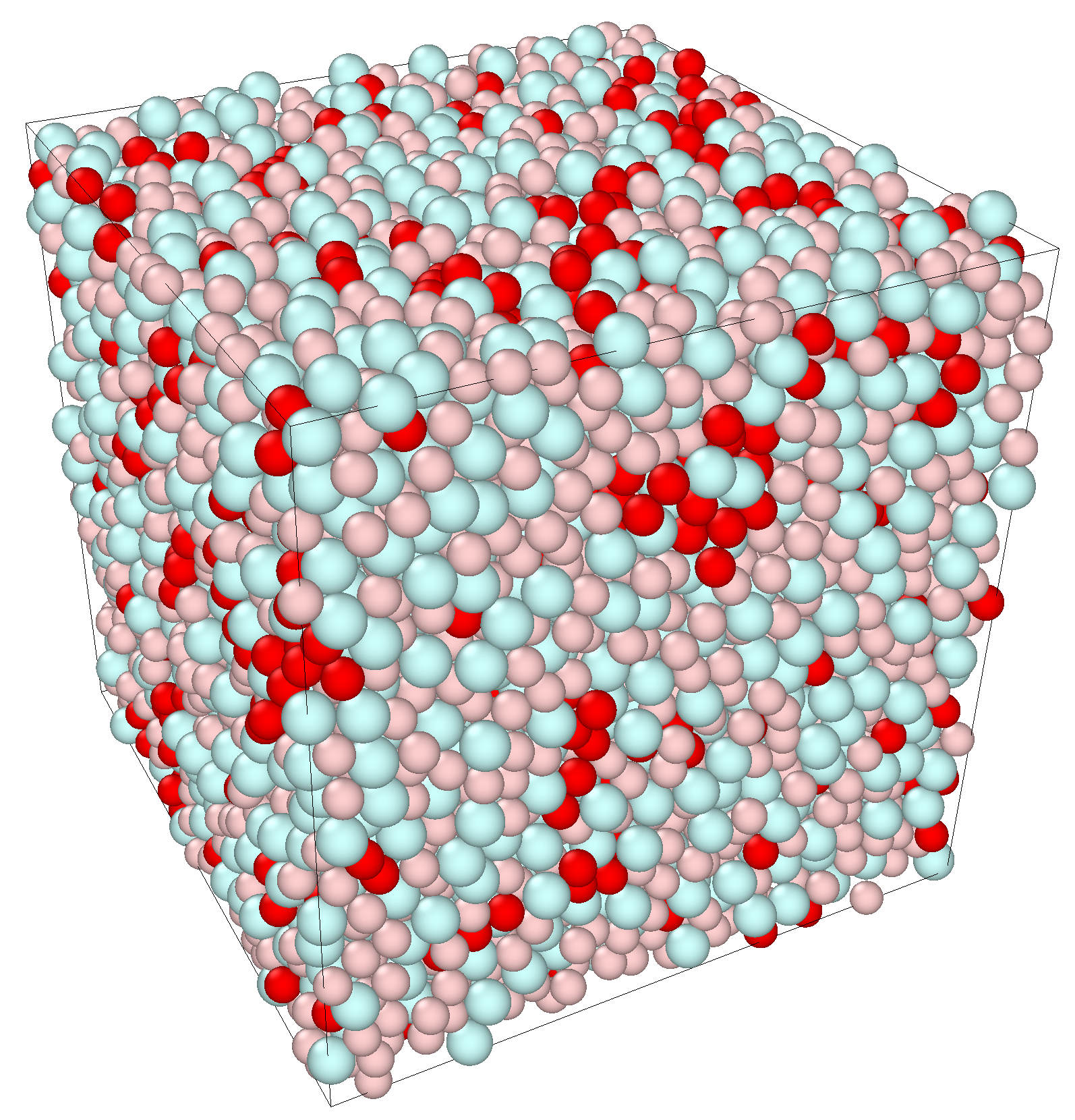Research
On the incubation period for nanocrystallization of a Ti-based liquid
Crystal nucleation within the incubation period of the Ti50Ni23Cu22Sn5 alloy in the supercooled liquid region is studied by using a state-of-the-art TEM experimental technique with elemental mapping at near-atomic resolution. Molecular dynamics (MD) simulation also illustrates the process of nucleation. The experiment and MD results indicate formation of nanometer-range chemical rearrangements (Fig.1a) reducing the energy barrier (ΔG) in the complex energy landscape (Fig.1b) finally leading to a high density of homogeneously nucleating cF96 crystallites after the completion of a macroscopically observed incubation period.
 |
|---|
| Fig.1a:Elemental composition inhomogeneity within the liquid alloy as a trigger for nucleation. Fig.1b:Complex free energy landscape with a saddle point. [Materials & Design, 156, (2018), 504-513, DOI:10.1016/j.matdes.2018.07.013] |
Finite volume methods for partial differential equations
We are interested in mathematical aspects of finite volume methods and partial differential equations(PDE) from both theoretical and numerical viewpoints. In the theoretical viewpoint, we have provided the existence and uniqueness of the weak solutions to stochastic PDEs with the help of finite volume methods. In the numerical viewpoint, we have performed simulations of the stochastic PDEs and of the density driven flow problem by finite volume methods. Recently, we are also interested in numerically studying with mesh refinement the crack growth phenomenon by phase-field model.
 |
|---|
| Fig.1:Theoretical study plan for first order stochastic conservation law |
Molecular Dynamics Simulation in Fast Ion Conductors
Fast ion conductors have found potential interest for battery electrolytes due to its very high ionic conductivity. The main goal is to find out the important factors which are responsible for high ionic conductivity. The microscopic level information is the wealth of such atomistic level understanding. In this regards, MD simulation is a key tool to get microscopic level information. However, the molecular dynamics simulation is very sensitive to the interaction potential. Thus, very accurate interaction potential is a key in this method.
 |
 |
|---|---|
| Fig.1:The ball and stick model of Li2B12H12- (left) at high temperature.The B and H are indicated by ball in yellow and pink respectively.The right figure indicates the Li+ ion path inside the above structure. | |
Electronic and optical properties of 3D graphene systems
3D graphene is a new class of graphitic system where a single layer of carbon atoms is rolled into three-dimensional porous structure. This kind of structure has been recently realized in experiment and attracting great attention. While flat graphene shows excellent electronic and mechanical properties, those of its 3D cousin is mostly unknown. In this research, we’re interested in revealing the effect of 3D curvature on graphene’s electronic and optical properties. Specifically, we investigate the graphene-decorated triply periodic surface proposed by Mackay and Terrones.
 |
.jpg) |
|---|---|
| Fig.1:(a) An unit cell of triply periodic 3D graphene. (b) Front view of (a). | Fig.2:Electronic band structure of 3D graphene system shown in Fig.1. |
Phase separation models and pattern-formation
We use infinite dimensional dynamical systems techniques and functional-analytic methods in multidimensional pattern formation, relying on matching techniques, asymptotic analysis and broad tools from both PDE and spectral theory, building new machinery to deal with higher dimensional phenomena as contact angles between interfaces and asymmetrical grain-boundaries. In an ongoing project, we have been studying grain-boundaries using the Swift-Hohenberg Equation using a great number of techniques from many areas, including analysis in periodic structures and harmonic analysis.
 |
|---|
| Snapshots of numerical simulations of Swift-Hohenberg Equation in 2D, where a quenching-front propagates to the right. In the bulk (left), a fully phase separated state is seen, while in the wake of the quenching front one sees rolls (right); ahead of the quenching front we see a homogeneous state. Interestingly, the structure of which suggest the presence of zig-zag instabilities. For more, see the preprint ″The Swift-Hohenberg Equation under directional-quenching: finding heteroclinic connections using spatial and spectral decompositions″. |
Uncovering the structure-property relationship in bulk metallic glasses
Metallic glasses are materials with outstanding mechanical properties, when prepared under appropriate conditions. This class of materials has short-range order but lacks long-range order. However, unlike crystals, their atomic structure remains poorly understood. This knowledge is crucial to understand the relation between the atomic configurations and the observed macroscopic properties.
By the use of atomistic modeling techniques such as molecular dynamics simulations, combined with methods for describing local atomic structures such as Voronoi tessellation, we study how the short-range order evolves towards the longer medium-range order in theses systems. By doing so, we aim at uncovering the relationship between the structure and the properties of metallic glasses, which will allow to further enhance their properties for future applications.
 |
|---|
| Fig.1:Atomic configuration of a Cu64.5Zr35.5metallic glass obtained from molecular dynamics calculations.Zr atoms appear in blue. Cu atoms are colored in pink and red. After performing a Voronoi tessellation, Cu atoms that are centers of icosahedra are colored in red. |
Three-dimensional bicontinuous nanoporous materials by vapor phase dealloying
Three-dimensional bicontinuous open (3DBO) nanoporosity has been recognized as an important nanoarchitecture for catalysis, sensing and energy storage. Dealloying, i.e. selectively removing a component from an alloy, is an efficient way to fabricate nanoporous materials. However, electrochemical and liquid-metal dealloying methods can only be applied to a limited number of alloys and usually require an etching process with chemical wastes. Here we report a green and universal approach, vapor phase dealloying, to fabricate nanoporous materials by utilizing the vapor pressure difference between constituent elements in an alloy to selectively remove a component with a high partial vapor pressure for 3DBO nanoporosity. We demonstrated that extensive elements, regardless of chemical activity, can be fabricated as nanoporous materials with tunable pore sizes. Importantly, the evaporated components can be fully recovered. This environmentally-friendly dealloying method paves a new way to fabricate 3DBO nanoporous materials for a wide range of structural and functional applications.
 |
 |
|---|---|
| Fig.1:The relation between temperature and saturated vapor pressure of zinc and cobalt in a prototype Zn-Co alloy system. | Fig.2:The schematic of the high-vacuum recyclable vapor phase dealloying system. |
 |
|
| Fig.3:The scanning electron microscopy image of nanoporous cobalt with pore size 40 nm by vapor phase dealloying method. |
Assemblies and properties of patchy particles
We study the dynamics of soft-matter such as nano-particles and colloids in non-equilibrium system. Our aim is to predict and control the structures and the properties of assembled particles with complex internal degrees of freedom. We simulate the structural formation of spherical patchy particles whose interaction is dependent on their orientations; such kind of particles are able to form complicated clusters. This study can be considered to have applications in materials design, for example, assembly particles into specific structures and devices, and the assembly in biological systems.
 |
 |
|---|---|
| Fig.1:Patchy particle whose patch of the same color is attractive. | Fig.2:The appearance of Kagome lattice in confined plane. |
 |
 |
| Fig.3:Clusters in 3-D space. | Fig.4:Formation of soccer ball pattern on spherical surface. |





